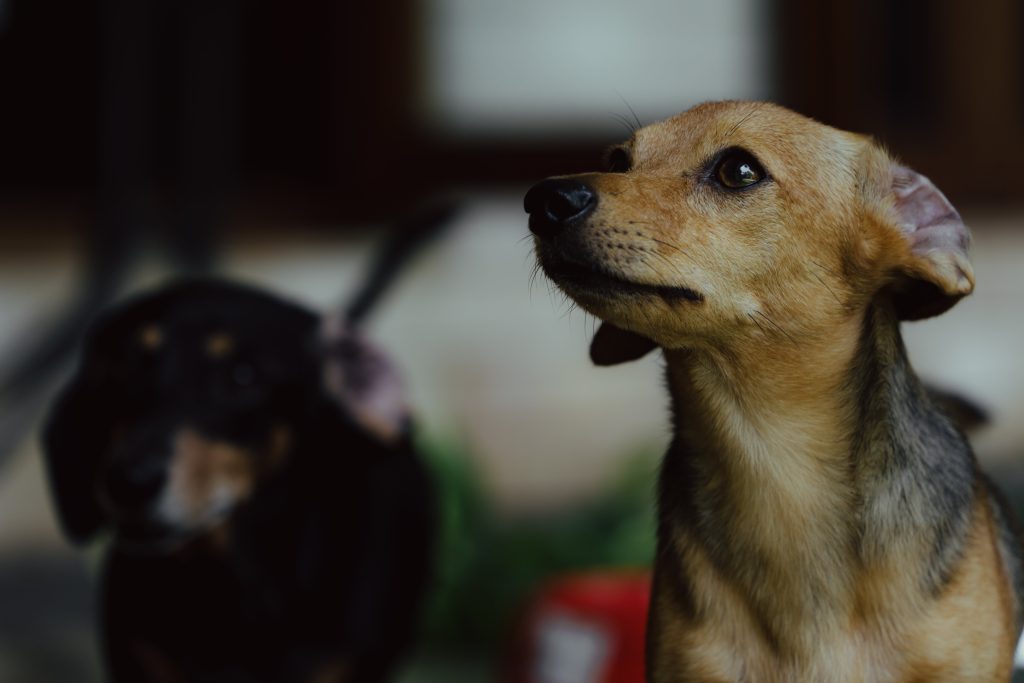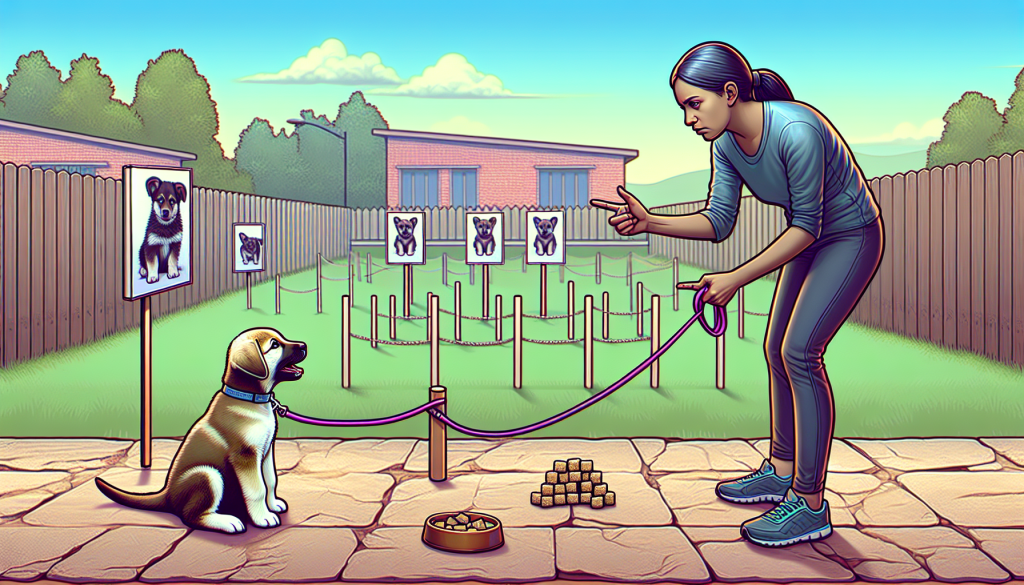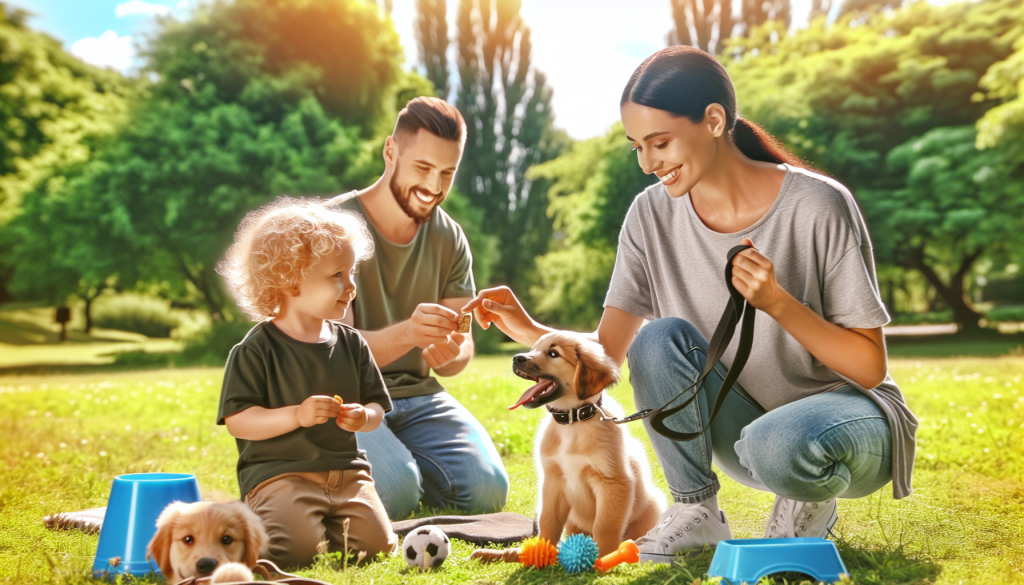So, you’ve got yourself a stubborn puppy, huh? Don’t worry, we’ve all been there! In this article, we’ll cover the best methods and techniques to train that little ball of energy. From understanding their unique personality traits to utilizing positive reinforcement, you’ll find everything you need to know in order to turn your stubborn pup into a well-behaved companion. Get ready to unleash their full potential as we embark on this exciting training journey together!
Understanding stubborn puppies
Traits of a stubborn puppy
When it comes to training a stubborn puppy, it’s important to first understand their unique traits. These puppies tend to be more independent and strong-willed, making training a bit more challenging. They may often exhibit behaviors such as refusing to follow commands, ignoring cues, or being resistant to learning new things. It’s important not to mistake their stubbornness for disobedience or lack of intelligence. Stubborn puppies can still be highly intelligent, but they require a different approach to training.
Causes of stubborn behavior
There are several factors that can contribute to a puppy’s stubborn behavior. One possible cause is their natural temperament. Some breeds are known to be more stubborn than others, so it’s essential to consider breed-specific traits when training. Additionally, a lack of early socialization and exposure to different environments can also contribute to stubborn behavior. If a puppy hasn’t been properly exposed to different people, animals, and situations during their critical socialization period, they may become wary or unresponsive in new situations.
Establishing a routine
Importance of a routine
Establishing a routine is crucial in training a stubborn puppy. Dogs thrive on predictability and structure, and having a consistent routine helps them understand what is expected of them. They are more likely to respond positively to training sessions when they know what to expect. A routine also helps create a sense of stability and balance in their lives, reducing anxiety and stress.
Creating a consistent schedule
To create a consistent routine, it’s essential to set a regular schedule for feeding, potty breaks, training sessions, exercise, and playtime. Consistency in these activities teaches the puppy about expectations and boundaries. For example, having specific times for feeding and potty breaks helps them understand when they should eat and go outside. Consistency is key when training a stubborn puppy, so try to stick to the schedule as much as possible.

This image is property of images.pexels.com.
Positive reinforcement training
Benefits of positive reinforcement
Positive reinforcement training is a highly effective method for training stubborn puppies. Instead of relying on punishment or harsh methods, positive reinforcement focuses on rewarding desired behaviors. This method helps build a strong bond between the puppy and their owner while promoting a positive learning experience. Positive reinforcement training increases the puppy’s motivation to learn, reduces stress and anxiety, and establishes a foundation of trust.
Using treats and rewards
One of the most common forms of positive reinforcement is using treats and rewards. When the puppy performs a desired behavior, such as sitting on command, they should be immediately rewarded with a treat or praise. The treats should be small, tasty, and easily chewed to avoid distractions. By associating the desired behavior with a positive outcome, the puppy will be more likely to repeat it in the future.
Clicker training
Clicker training is another effective technique within positive reinforcement training. It involves using a small handheld clicker to mark the exact moment the puppy performs a desired behavior. The click sound serves as a distinct marker that communicates to the puppy that they have done something right. By pairing the click with a treat or reward, the puppy learns to associate the sound with a positive outcome. Clicker training can help speed up the learning process and improve communication between the owner and the puppy.
Setting clear boundaries
Teaching basic commands
Setting clear boundaries through teaching basic commands is essential for a stubborn puppy. Start with fundamental commands such as “sit,” “stay,” and “come.” Be consistent in your expectations and use positive reinforcement to encourage the puppy to follow these commands. When teaching a new command, break it down into small steps and gradually increase the level of difficulty. With patience and consistency, the puppy will learn to understand and obey these basic commands.
Establishing house rules
Establishing clear house rules is crucial in shaping a well-behaved puppy. Decide on the rules and boundaries you want to set, such as not allowing the puppy on furniture or not begging for food during meals. Consistently enforce these rules, using positive reinforcement to reward good behavior and redirecting them when they misbehave. Clear and consistent communication of these rules will help the puppy understand what is expected of them.
Using verbal and non-verbal cues
Both verbal and non-verbal cues are essential in training a stubborn puppy. Use clear and concise verbal commands, using a firm but friendly tone. Pair these commands with corresponding hand signals to add clarity to your communication. Non-verbal cues, such as body language and facial expressions, can also play a significant role in training. For example, using a stern facial expression and crossed arms can indicate disapproval, reinforcing the idea that certain behaviors are undesirable.

This image is property of images.pexels.com.
Patience and consistency
Importance of patience
Patience is a key ingredient in training a stubborn puppy. It’s important to remember that puppies, especially stubborn ones, learn at their own pace. Getting frustrated or losing your temper will only hinder the training process. Stay calm, be patient, and focus on the progress the puppy is making. By maintaining a positive and patient attitude, you’ll create a more enjoyable training experience for both you and your furry friend.
Consistency in training methods
Consistency is vital when training a stubborn puppy. Ensure that everyone in the family is on the same page and follows the same training methods and rules. A puppy can become confused if they receive mixed messages from different family members. Consistency also applies to the training environment. Try to minimize distractions during training sessions and use the same training area to establish familiarity. By consistently applying the same training methods, the puppy will learn faster and be less likely to exhibit stubborn behavior.
Avoiding punishment
Punishment is not an effective method for training a stubborn puppy. It can cause fear, anxiety, and even aggression in the puppy. Instead of punishing undesirable behaviors, focus on reinforcing the desired behaviors through positive reinforcement. Redirect their attention to a more appropriate behavior and reward them when they comply. By focusing on positive reinforcement and avoiding punishment, you’ll build a trusting and loving relationship with your puppy.
Socialization and exposure
Introducing new people and animals
Socialization is crucial for a well-rounded and well-behaved puppy. Gradually introduce your puppy to different people, animals, and environments from a young age. Arrange controlled and positive interactions with friendly dogs and people of all ages. This exposure will help the puppy become more confident, less fearful, and more responsive to training. It’s important to monitor these interactions, ensuring they are safe and positive experiences for your puppy.
Exposing to different environments
Expose your stubborn puppy to various environments, both indoors and outdoors. Take them on walks in different locations, exposing them to different sounds, smells, and sights. This exposure helps to desensitize them and prevents them from becoming anxious or reactive in new situations. Remember to start with less overwhelming environments and gradually build up to more challenging ones, allowing the puppy to adapt and feel comfortable.
Gradual desensitization
If your puppy displays fear or anxiety towards specific situations or objects, use gradual desensitization techniques. Start by introducing the trigger at a safe distance and reward the puppy for remaining calm. Over time, gradually decrease the distance between the puppy and the trigger, always rewarding calm behavior. This process helps the puppy associate the trigger with positive outcomes and learn to remain calm in previously stressful situations.

This image is property of images.pexels.com.
Managing stubborn behavior
Redirecting attention
When a stubborn puppy exhibits undesirable behavior, such as chewing on furniture or jumping on guests, it’s important to redirect their attention to more appropriate activities. Offer them chew toys or engage them in mentally stimulating games when they start misbehaving. By redirecting their attention, you show them what they should be doing instead of focusing on the negative behavior.
Preventing reinforcement of negative behaviors
To prevent the reinforcement of negative behaviors, it’s important to identify and eliminate any unintentional rewards for those behaviors. For example, if your puppy barks to get attention, avoid giving them attention until they are calm. By withholding attention during unwanted behavior and rewarding calmness, you teach them that calm behavior is more rewarding than misbehaving.
Seeking professional help if needed
If your stubborn puppy continues to exhibit challenging behavior despite your best efforts, consider seeking professional help. A professional dog trainer or behaviorist can provide guidance specific to your puppy’s needs. They can assess the root cause of the stubborn behavior, offer tailored training techniques, and help you navigate through any difficulties you may encounter during the training process. Remember, asking for help is a sign of being a responsible and dedicated dog owner.
Building trust and bond
Building a strong foundation of trust
Building trust is crucial in training a stubborn puppy. Trust forms the basis of a healthy and productive relationship between you and your furry friend. Spend quality time bonding with your puppy, engaging in positive activities such as playtime, grooming, and gentle handling. Always be reliable and consistent in your actions and responses. By building a strong foundation of trust, your puppy will be more receptive to training and more likely to listen to your commands.
Engaging in bonding activities
Engaging in bonding activities strengthens the bond between you and your stubborn puppy. Take them on regular walks, play games together, and provide plenty of affection and praise. Engaging in these activities helps create positive associations with you and reinforces your role as their trusted and caring companion. The more you invest in your relationship through bonding activities, the stronger the bond will become.
Maintaining a positive relationship
Maintaining a positive relationship with your stubborn puppy is crucial beyond the training stage. Continue to provide them with ample love, care, and attention, even after they have mastered their training. Positive interactions and consistent reinforcement of desirable behaviors will keep the bond between you and your puppy strong. Remember, a positive relationship based on trust and love goes a long way in shaping a well-behaved and happy companion.

Understanding breed-specific traits
Researching breed characteristics
Understanding the breed-specific traits of your stubborn puppy can greatly enhance your training approach. Different breeds have varying temperaments, energy levels, and behaviors. Research your puppy’s breed to gain insights into their specific needs and tendencies. This knowledge will help you tailor your training methods and set realistic expectations for your stubborn pup.
Adapting training methods accordingly
Once you have a better understanding of your puppy’s breed-specific traits, you can adapt your training methods accordingly. For example, some breeds may respond better to shorter, more frequent training sessions, while others may require more physical exercise to release excess energy. By adapting your training methods to suit your puppy’s breed, you can ensure a more effective and successful training experience.
Addressing specific challenges
Certain breeds may present specific challenges that require additional attention. For instance, some breeds are prone to separation anxiety or have a strong prey drive. Understanding these challenges allows you to proactively address them during training. Seek advice from breed-specific resources, trainers, or experienced dog owners who have dealt with similar challenges. By taking these challenges into account, you can develop strategies to overcome them and ensure a well-rounded training experience.
Taking care of your own well-being
Managing frustration and stress
Training a stubborn puppy can be challenging and may sometimes lead to frustration or stress. It’s important to manage these emotions to ensure a positive training experience. Take breaks when needed, practice deep breathing exercises, and focus on the progress you and your puppy have made. Remember to keep the training sessions fun and enjoyable for both of you.
Practicing self-care
Taking care of your own well-being is essential when training a stubborn puppy. Ensure that you are getting enough sleep, eating well, and making time for activities that bring you joy and relaxation. A happy and balanced owner will be better equipped to handle the challenges that come with training a stubborn puppy. Remember, self-care is just as important as taking care of your furry friend.
Seeking support from others
Seeking support from others can make a significant difference in your training journey. Reach out to fellow dog owners, join training classes or online forums, or consult professional trainers or behaviorists. The shared experiences and advice from others going through similar situations can provide you with valuable insights, encouragement, and solutions to overcome challenges. Remember, you’re not alone in your journey of training a stubborn puppy.
To wrap up, training a stubborn puppy requires patience, consistency, and understanding. By establishing a routine, using positive reinforcement, setting clear boundaries, and focusing on socialization, you can shape your puppy into a well-behaved and happy companion. Building trust, adapting training methods to breed-specific traits, and taking care of your own well-being are equally important aspects of the training process. Remember, with dedication, love, and a friendly tone, you can overcome the challenges and enjoy a fulfilling journey of training your stubborn puppy.
